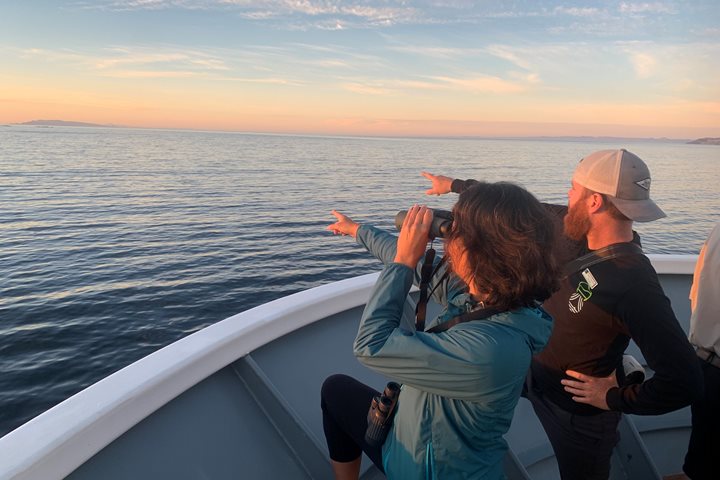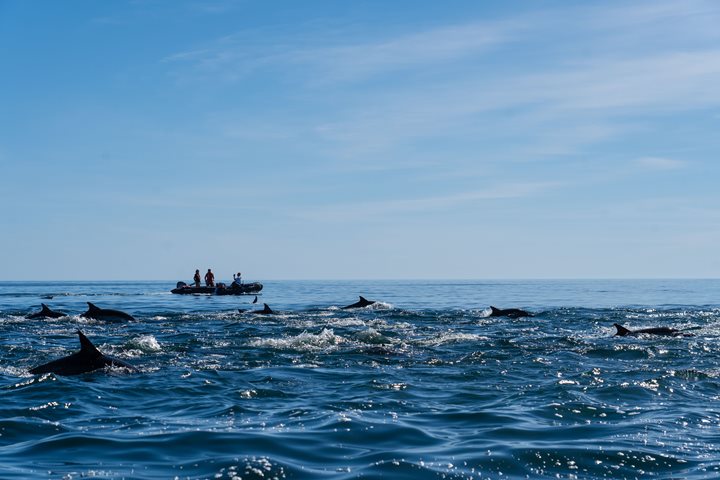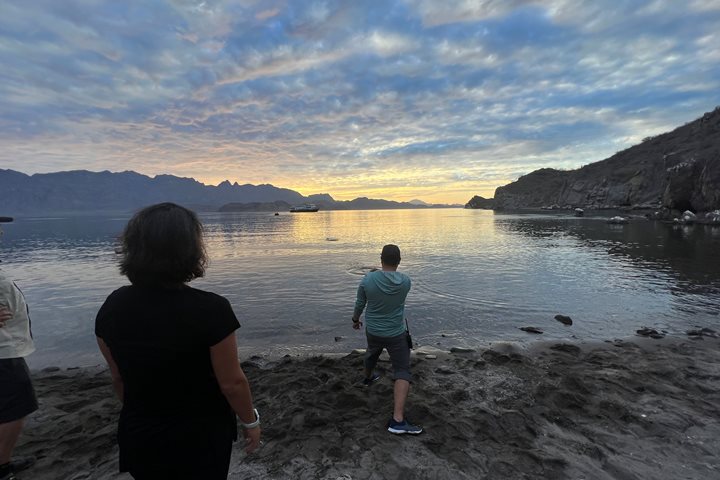At 6:00 the anchor chain noisily dropped beside Isla San Pedro Mártir, an isolated, guano-encrusted island where we planned to explore with our rubber inflatables. Seabirds concentrate here by the thousands during breeding season. Blue-footed and brown boobies careened overhead and perched on the brightly hued volcanic rocks while we drove past. Wisps of fog and high clouds created a misty mood as we poked into caves and searched the water’s edge for birds, Sally Lightfoot crabs, and the largest denizens of the island, the California sea lions.
This is a haul-out, or resting place, and also a pupping area for sea lions. Limp bodies snoozed on the warm stone ledges, ready to rear up in an instant to argue with any intruders for the best sunbathing spot. Quite a few swam eagerly towards us. The yearlings in particular seemed curious to discover such unusual bathtub toys in their neighborhood. At times they leaped clear of the surface in wild flips or jumped like porpoises to maintain speed. There is no way to watch these playful creatures without smiling. Sharp-eyed staff members spotted three Guadalupe fur seals among the hundreds of similar sea lions. It is exciting to see this species in the Sea of Cortez, as they are typically found offshore on the Pacific side of the Baja Peninsula.
The marine world was also alive with life. Jellyfish drifted by like pale blobs of blubber. Iridescent copepods called Copilia glinted beneath our boats like blue sequins catching the light. These are not bioluminescent as are many saltwater inhabitants in darkness; instead the males have guanine crystals that refract and reflect light to produce their stunning sapphire color in a way that one can see in broad daylight.
As the ship motored on we passed through banks of thick fog that alternated with bright blue sky. A surface-temperature map of the upper gulf from yesterday shows recent upwelling of cold water, a possible reason for the unusual weather.
By late afternoon National Geographic Sea Lion was snugly secured to the dock in the sheltered harbor at Santa Rosalía. The reflections of local fishing boats danced in the calm water nearby. Copper deposits drew entrepreneurs to this location, and in the 1880s the town was established. Mining activity has recently resumed with new equipment and procedures. Old machinery and locomotives are displayed along the main streets of this working community of miners and fishermen. We visited a metal church believed by many to have been designed by Gustav Eiffel and later gathered for cocktails and guacamole at the historic Hotel Frances, with an expansive veranda and restored interior. The sun sank lower on the horizon, and we returned to the ship after another varied day on our journey through the Sea of Cortez.







